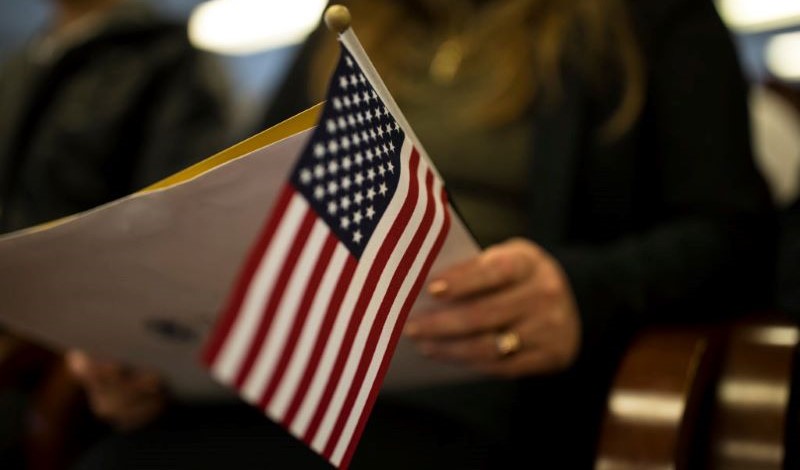
Scholar argues that the way immigration case appeals are handled may need an overhaul.
Immigrants applying for asylum face a number of uncertainties, one of which can vary between individuals applying in, for example, California, and those applying in Massachusetts. In a forthcoming article, law professor Jayanth K. Krishnan argues that a circuit split grants more final power to immigration judges in some jurisdictions than others, creating fundamental unfairness in the immigration process.
For immigrants petitioning to stay in the United States through discretionary relief, such as asylum or a green card case, an immigration judge within the U.S. Department of Justice will review the facts and weigh positive and adverse factors to make a decision, Krishnan explains. These facts may include, for example, an applicant’s credibility or whether they pose a threat of future crime based on past criminal history. The balancing review of these facts will determine whether a judge moves to deport an immigrant or allows them to remain in the country.
If the government appeals an immigration judge’s decision to allow an immigrant to stay in the country and pursue citizenship, that immigrant may again face deportation. The Board of Immigration Appeals (BIA), the administrative body responsible for reviewing appeals of immigration decisions, is only able to challenge factual findings from the immigration judge in the case of a glaring error. But the BIA’s review otherwise differs by jurisdiction.
Here, Krishnan uses the U.S. Court of Appeals for the First Circuit and the U.S. Court of Appeals for the Ninth Circuit to show the current standards the BIA must follow in reviewing an immigration judge’s determinations used in various courts in the nation. In the First Circuit, the BIA does not have to accept the immigration judge’s weighing of factors like credibility determinations and can reweigh them to come to a new factual conclusion. In the Ninth Circuit, the BIA cannot re-weigh these same factors because the court has determined that it is the role of the immigration judge to make determinations on issues of fact, and the weighing of social factors, like in credibility determinations, is a factual issue.
In practice, this means that in the First Circuit, a judge’s determination that an immigrant was a model citizen can be reviewed anew and disputed by the BIA, but it cannot in the Ninth Circuit. If the model citizen determination is the underpinning for the grant of asylum, this may completely alter the outcome, according to Krishnan.
This inequity prompts Krishnan to launch several objections to the current system. His initial objection is that, without allowing for factual errors to be relitigated and completely reviewed by the BIA, the review process is unjust. Krishnan worries that factual errors would be retained and deferred to by a higher court, without giving an immigrant an opportunity to correct them.
He next points to a “double standard” between criminal trials and immigration proceedings: The government may not appeal not-guilty verdicts in criminal trials, but the government may appeal positive outcomes in immigration proceedings. His view is that, like in criminal trials, the government should not be able to appeal positive outcomes in immigration proceedings since it is difficult for immigrants to secure a positive outcome in the first place.
Krishnan’s solution to these issues results in a two-part model. His first stage would not allow the government to appeal favorable judgments to immigrants. Under Krishnan’s model, immigrants could still appeal a finding upholding their deportation, but if the finding was in favor of granting asylum the government could not. If immigrants do appeal, the second part of Krishnan’s model would allow the BIA to review every finding from the immigration court, factual findings included, completely anew—instead of only in cases of glaring errors.
Krishnan acknowledges that the second part of his model allows the BIA to interfere with the immigration court’s findings and bars it from engaging with favorable verdicts in the first part, leading to inconsistency.
Krishnan views this inconsistency as equitable since it creates more opportunity for granting applications and limits opportunities for the appellate denial of applications previously granted. Federal courts above the BIA are not inclined to overrule the BIA’s decisions, so Krishnan argues that addressing these outcomes lower down the pipeline increases equity higher up the pipeline. He also points to normative theorists to note that the system is not established in favor of immigrants, so he argues that any way to make the process more fair for the largely unrepresented population navigating appeals should be considered.
Looking toward the future, Krishnan points to a long term solution for elaborate reform. The Real Courts, Rule of Law Act of 2022 would relocate immigration courts from under the executive branch and appoint judges by the President and Senate, rather than through the U.S. Department of Justice, whose employees are both BIA adjudicators and immigration judges. Relocation would create independent immigration courts that are less likely to be biased by their role in the Justice Department, Krishnan argues.
In the meantime, Krishnan contends that his model presents a more attainable near-term step that addresses the inequity present in the immigration system.



